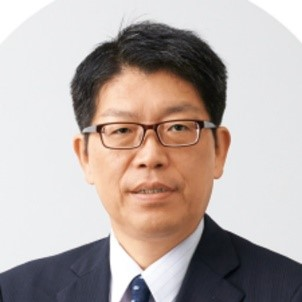Smart City and Zero Energy House/Building
A special issue of Sustainability (ISSN 2071-1050). This special issue belongs to the section "Energy Sustainability".
Deadline for manuscript submissions: closed (31 October 2021) | Viewed by 21171
Special Issue Editor
Interests: high-efficiency energy conversion system; renewable energy in small islands; optimization of power system operation and control
Special Issues, Collections and Topics in MDPI journals
Special Issue Information
Dear Colleagues,
The Guest Editor is inviting submissions to a Special Issue of Sustainability in the area of “Smart City and Zero Energy House/Building”. Optimization and control techniques are important for the efficient use of energy systems. There have been many emerging issues for smart city and zero energy house/building. Moreover, the Internet of Things (IoT) and Artificial Intelligence (AI) are also interesting topics for energy treatment in a smart city. The smart meter is also a useful new facility in houses and buildings. The big data from smart meters create new business and/or new technologies for us. Transportation issues are also very important in modern society.
This Special Issue will deal with novel optimization and control techniques for smart cities and zero energy house/building. Topics of interest for publication include but are not limited to:
- Big data analysis for smart meters;
- Control strategy for battery energy storage systems;
- Optimal facilities of smart cities;
- Energy management systems in smart cities and zero energy house/building;
- Application of IoT and/or AI in smart cities;
- Optimal capacity of parks and rides in smart cities;
- Forecasting of renewable energy;
- Demand side management in smart cities;
- Electric vehicle charging stations in zero energy houses/buildings.
Prof. Dr. Tomonobu Senjyu
Guest Editor
Manuscript Submission Information
Manuscripts should be submitted online at www.mdpi.com by registering and logging in to this website. Once you are registered, click here to go to the submission form. Manuscripts can be submitted until the deadline. All submissions that pass pre-check are peer-reviewed. Accepted papers will be published continuously in the journal (as soon as accepted) and will be listed together on the special issue website. Research articles, review articles as well as short communications are invited. For planned papers, a title and short abstract (about 100 words) can be sent to the Editorial Office for announcement on this website.
Submitted manuscripts should not have been published previously, nor be under consideration for publication elsewhere (except conference proceedings papers). All manuscripts are thoroughly refereed through a single-blind peer-review process. A guide for authors and other relevant information for submission of manuscripts is available on the Instructions for Authors page. Sustainability is an international peer-reviewed open access semimonthly journal published by MDPI.
Please visit the Instructions for Authors page before submitting a manuscript. The Article Processing Charge (APC) for publication in this open access journal is 2400 CHF (Swiss Francs). Submitted papers should be well formatted and use good English. Authors may use MDPI's English editing service prior to publication or during author revisions.
Keywords
- Optimal configuration/control of smart cities
- Optimization/control of zero energy houses
- Optimization/control of zero energy buildings
- Combined cooling Heating and Power (CCHP)
- Thermal energy
- Renewable energy
- Park and ride
- Smart transportation
- Smart meter
- Artificial intelligence (AI)
- Internet of things (IoT)
Benefits of Publishing in a Special Issue
- Ease of navigation: Grouping papers by topic helps scholars navigate broad scope journals more efficiently.
- Greater discoverability: Special Issues support the reach and impact of scientific research. Articles in Special Issues are more discoverable and cited more frequently.
- Expansion of research network: Special Issues facilitate connections among authors, fostering scientific collaborations.
- External promotion: Articles in Special Issues are often promoted through the journal's social media, increasing their visibility.
- Reprint: MDPI Books provides the opportunity to republish successful Special Issues in book format, both online and in print.
Further information on MDPI's Special Issue policies can be found here.





